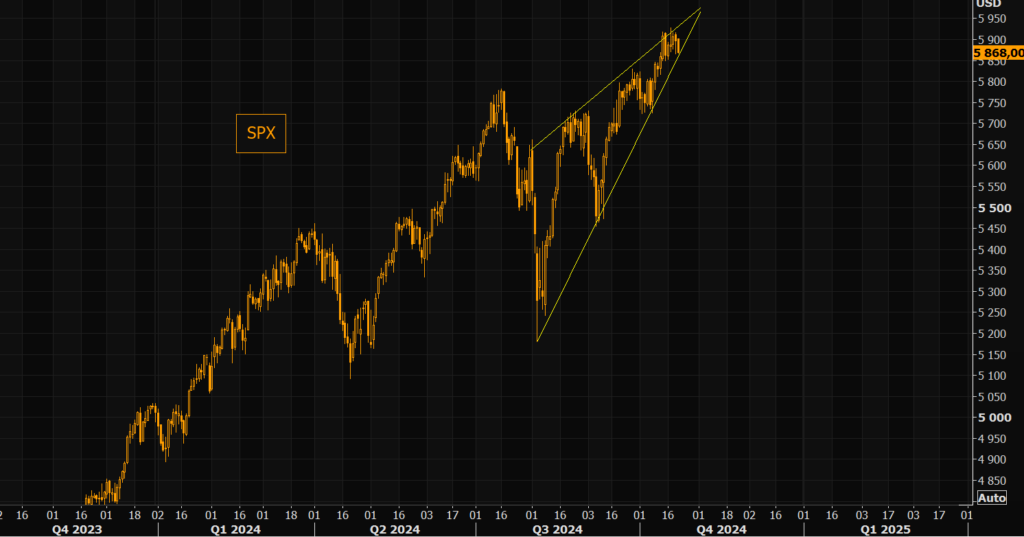The recent market analysis indicates that the S&P 500 (SPX) is currently forming a rising wedge pattern, which typically signifies potential bearish implications. Traders have observed that as the SPX continues to trade within this tighter range, the highs achieved are losing momentum, hinting at a possible weakening in market strength. This pattern suggests that the upward movement in prices is increasingly constrained and might lead to a reversal if the trend continues. Investors should be vigilant as the current trading behavior may not sustain the upward trajectory long-term.
One significant aspect to monitor is the steep short-term trend line that has been in place since the lows established in August. This trend line serves as a critical support level, and any close below it could signal a shift in market dynamics. A breach of this trend line might not only trigger selling pressure but also inspire a more substantial decline in prices as traders reassess their positions. The implications of such a move could be profound, particularly for those who have been relying on the upward momentum observed over recent months.
It’s crucial to recognize that rising wedges are often interpreted as reversal patterns, especially when they occur after a prolonged uptrend. The narrow trading range can create a false sense of security among traders, drawing them into buying positions at increasingly risky levels. As the highs continue to lose momentum, the risk of a sharp sell-off escalates, particularly if market participants begin to lose confidence. The convergence of declining momentum and tightening price action within the rising wedge can often presage significant market corrections.
Technical indicators may also offer insights into the potential ramifications of this pattern. Traders typically look for confirmation signals, such as volume surges on declines or volatility spikes, which could indicate that a breakdown is on the horizon. Monitoring these indicators alongside price action will be vital for making informed trading decisions in the coming days. The broader market context, including economic indicators and geopolitical factors, further influences sentiment and market performance, making it essential for traders to consider these external elements.
As the situation unfolds, market participants would benefit from maintaining a cautious approach. Having stop-loss orders in place and adhering to well-defined risk management practices can help mitigate potential losses in a precarious market environment. The current trading conditions might require a shift in strategy, possibly moving towards more defensive positions until clarity emerges on whether the SPX will break down through the rising wedge or re-establish an upward trajectory.
In conclusion, the evolving technical landscape around the S&P 500 presents both challenges and opportunities for traders. With the rising wedge forming and momentum waning, participants need to stay alert as the market approaches critical support levels. A close below the established trend line could lead to increased volatility and a potential market correction, requiring traders to adapt their strategies accordingly. Emphasizing risk management and remaining aware of broader influences will be essential for navigating this complex environment effectively.

